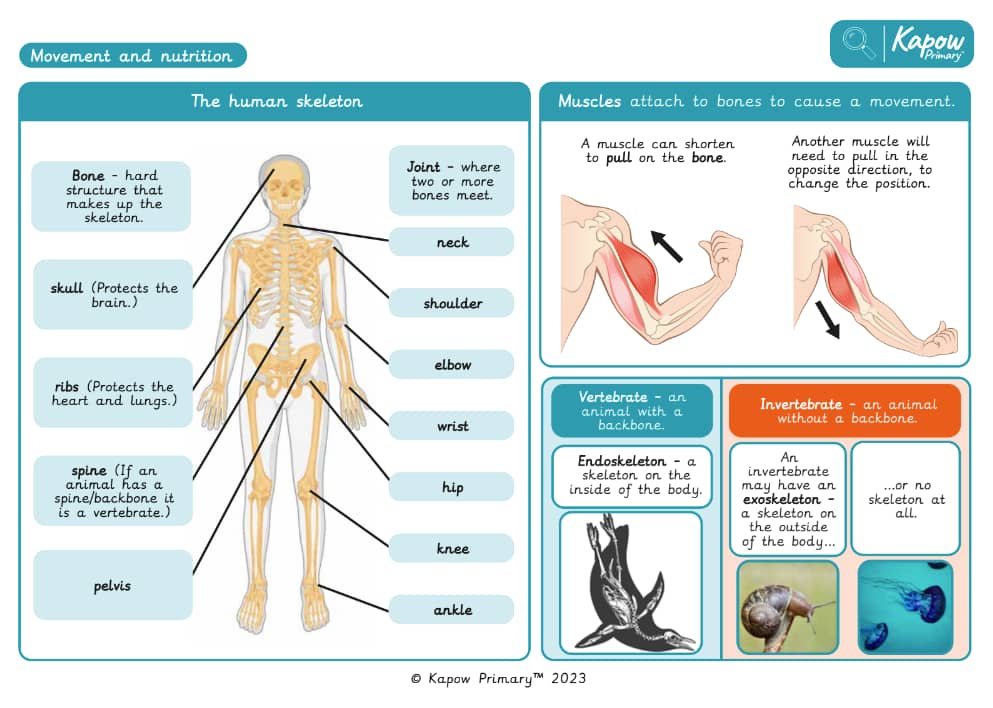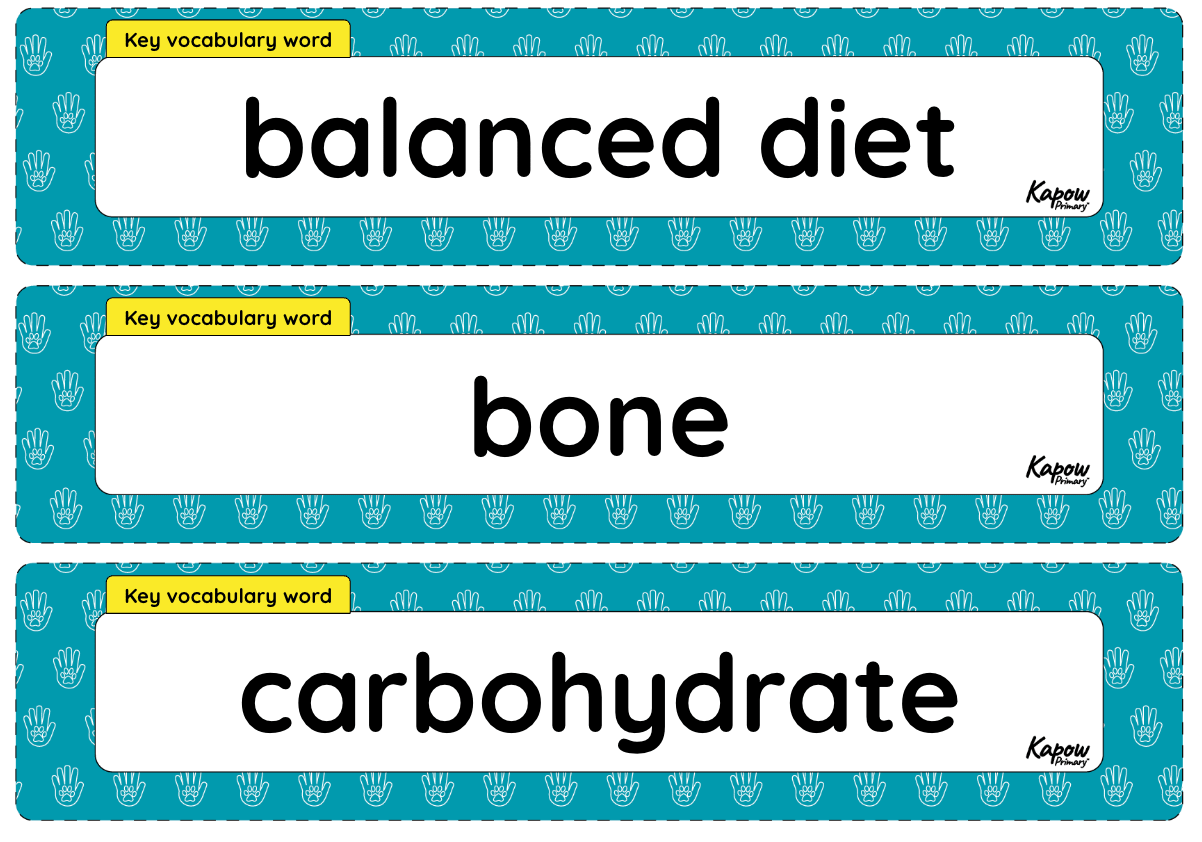Y3/4 (A): Animals, including humans: Movement and nutrition
Exploring the role of skeletons and muscles, learning how the body uses energy and what constitutes a balanced diet.
The Curriculum and Assessment Review final report has been released. We’re reviewing the recommendations and planning for future updates. Learn more
Unit outcomes
Pupils who are secure will be able to:
- Recall the three key functions of the skeleton (movement, support and protection).
- Describe a vertebrate, invertebrate, endoskeleton and exoskeleton.
- Identify and name the skull, spine, ribs and pelvis on a diagram.
- Recall that muscles cause movements in the body, some of which we control by choice and that they cause a movement by shortening and pulling on a bone.
- Recall that animals, including humans, need to eat food to survive.
- Describe some examples of how energy is used by the body and make comparisons about the energy demands between people.
- List some of the seven nutrient groups, name foods that are good sources of them and describe what they are needed for in the body.
- Compare two different meals and explain which is more balanced by naming the nutrient groups and commenting on the relevant proportions.
When working scientifically, pupils who are secure will be able to:
- Use information about skeletons to group animals.
- Record measurements of different bones and use the data to sort them into size order.
- Describe some ways scientific research has improved the field of bionics/prosthetics, such as the choice of materials or linking their movement to muscles in the arm.
- Find relevant data on food packaging and make numerical comparisons.
- Summarise key information using secondary sources.
- Describe some changes to scientific knowledge and jobs that require this information.
Please note that Kapow Primary Science lessons are designed to be 1 hour and 30 minutes long to reflect the requirements of a core subject.
Suggested prior learning
Lessons
Y3/4 (A): Lesson 1: Skeletons
Knowledge
- To explain the role of a skeleton.
Working scientifically
- To group animals based on their physical properties.
Y3/4 (A): Lesson 2: The bones in our body
Knowledge
- To recognise the main bones in the body.
Working scientifically
- To measure and sort data.
Y3/4 (A): Lesson 3: Muscles and movement
Knowledge
- To explain how muscles are used for movement.
Science in action
- To explore scientific advances.
Y3/4 (A): Lesson 4: Eating for survival
Knowledge
- To explain how food is an essential energy source for animals.
Working scientifically
- To gather and compare data to answer questions.
Y3/4 (A): Lesson 5: Nutrient groups
Knowledge
- To identify the main nutrient groups and their simple functions.
Working scientifically
- To record information using secondary sources.
Y3/4 (A): Lesson 6: Balanced diets
Knowledge
- To explain what makes a balanced diet.
Science in action
- To explore how knowledge has progressed over time and how different jobs use this information.
Key skills
Key knowledge
Related content
Unit resources

Knowledge organiser – Science Y3/4 (A): Animals, including humans: Movement and nutrition
Aimed at pupils, two pages providing key facts and definitions from the mixed-age unit ‘Movement and nutrition',

Vocabulary display – Science Y3/4 (A): Animals, including humans: Movement and nutrition
A display version of the vocabulary for the mixed-age unit ‘Movement and nutrition’.
Cross-curricular opportunities
Mathematics: Number and place value, Number – addition and subtraction, Measurement.
English: Spoken language, Reading.
Design and technology: Cooking and nutrition.
RSE
British values: Mutual respect, Tolerance of those with different faiths and beliefs.

